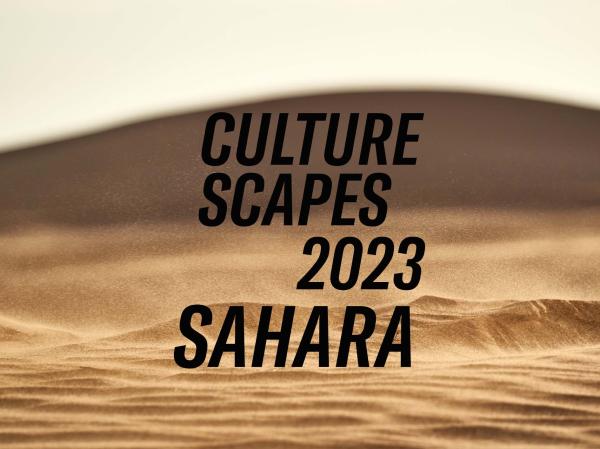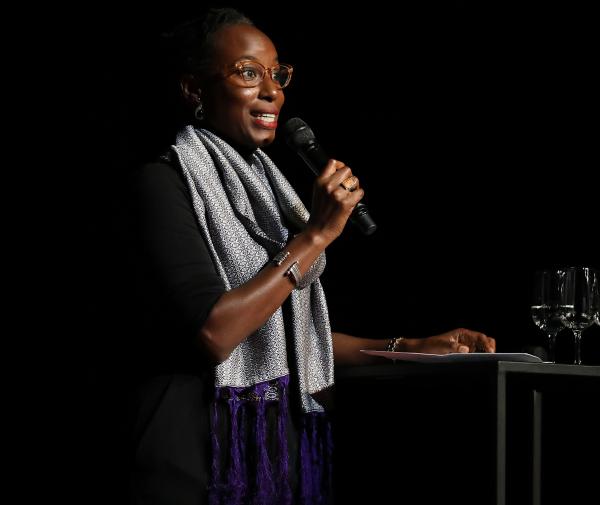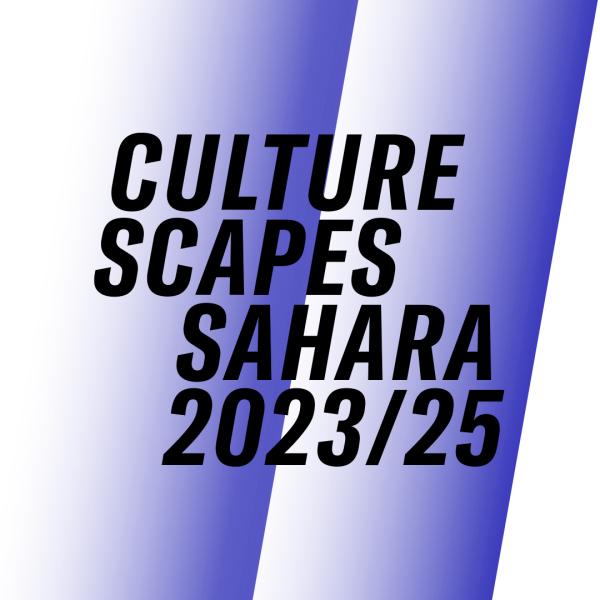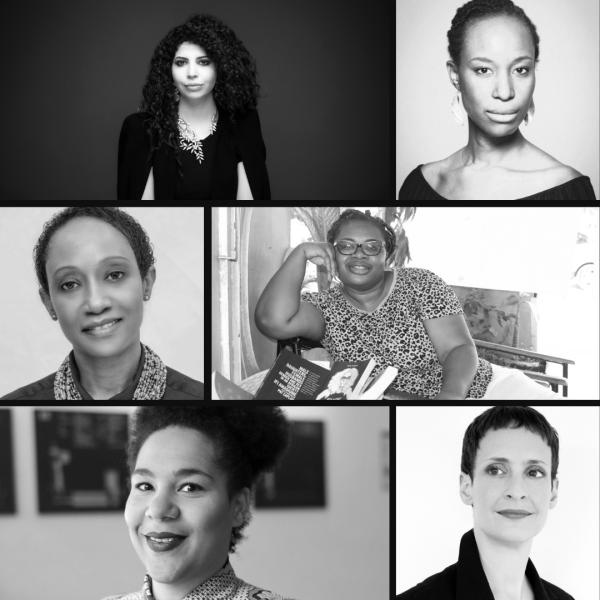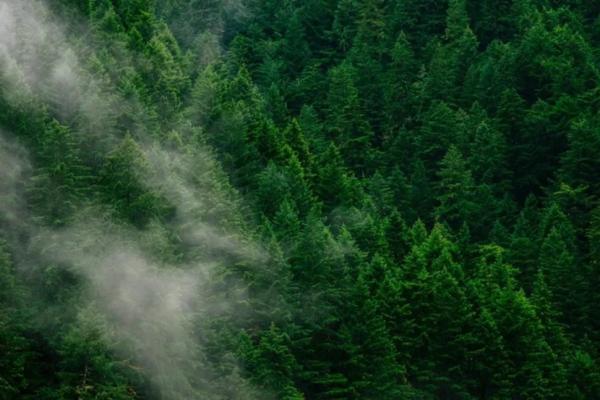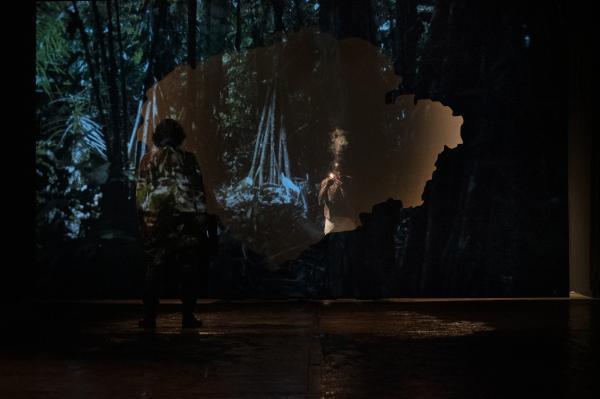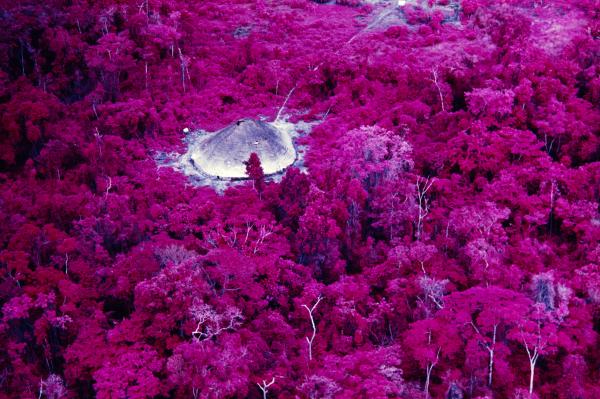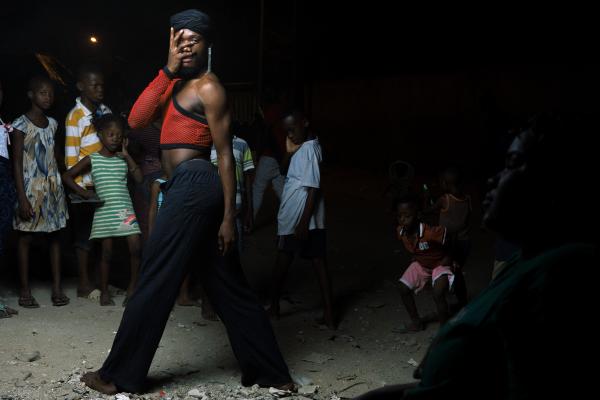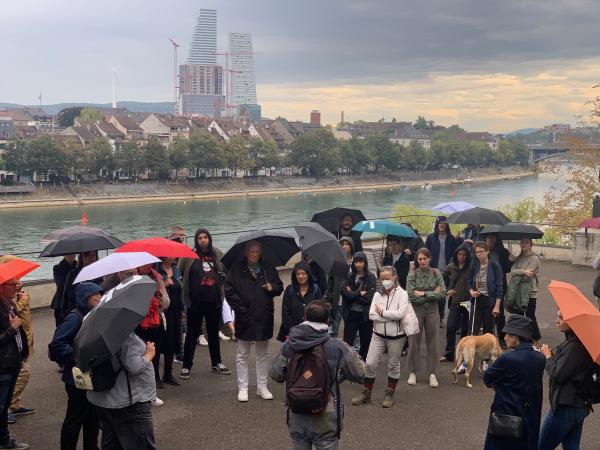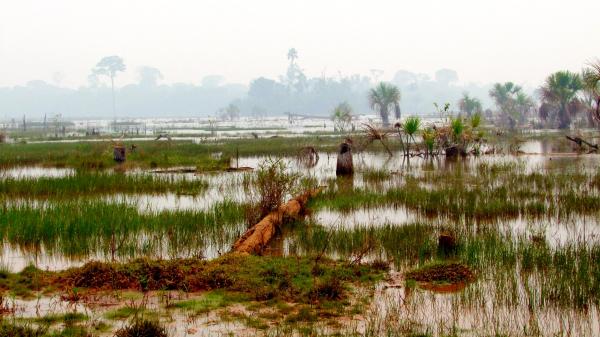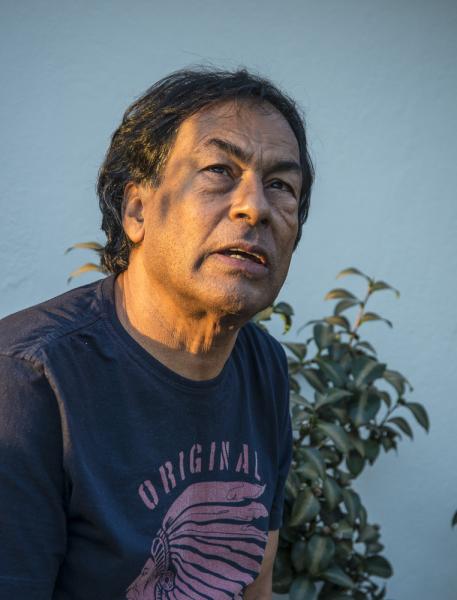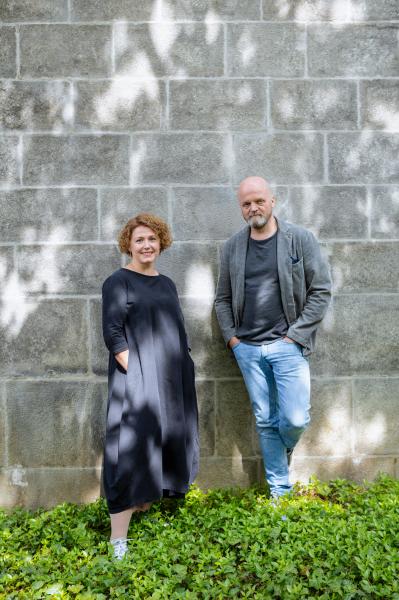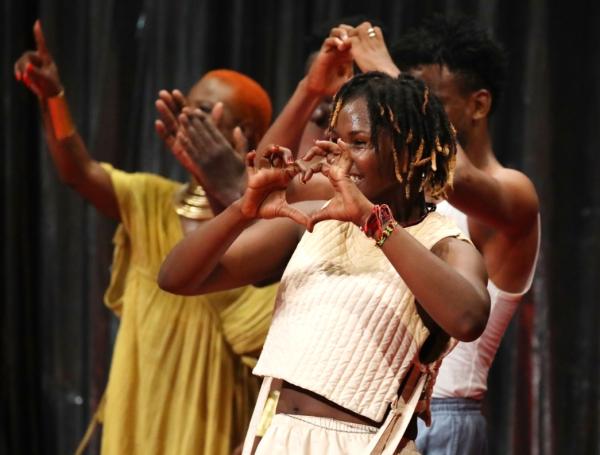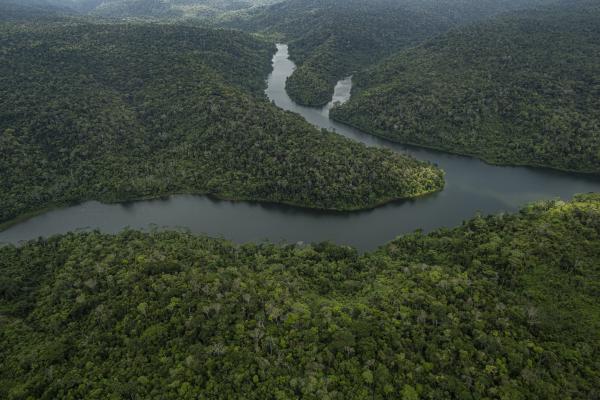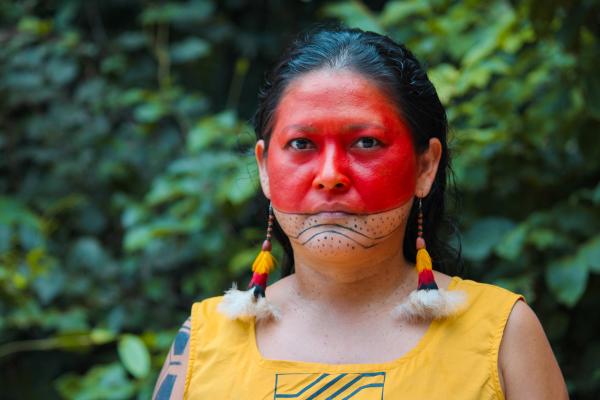The Kenyan environmentalist Wangari Maathai was awarded the Nobel Peace Prize in 2004 for her work in combating deforestation. She was the first environmentalist ever to win the award. Yet, in January 2020 Ugandan climate change activist Vanessa Nakate was cropped out of a photo where she stood with four other activists, all white, at a Davos summit. Climate change activism appeared to be an affair mainly of the rich West, at least according to some framings. That framing is of course challenged by the many environmental activists from Africa working to shape our common future. Hindou Oumarou Ibrahim, from Chad, is one of them.
Hindou defines herself as a Mbororo woman, a member of an Indigenous nomadic Mbororo People belonging to the wider Fulani People. Her environmental advocacy focuses on the intersection of Indigenous Peoples’ knowledge and practices and women’s empowerment. She founded the Association of Peul Women and Autochthonous Peoples of Chad (AFPAT), which regularly takes part in international climate and biodiversity negotiations. She feels a strong connection to Indigenous peoples from all across the world, and codirected the World Indigenous Peoples' Pavilion at three climate COP conferences including COP21 in Paris.
This conversation with Hindou by Yarri Kamara gives us a glimpse into the viewpoints, inspirations, and frustrations of climate activism in the Sahel.
Yarri Kamara:
You are one of the global figureheads of the fight against climate change and environmental degradation. Thank you for the work you do. Why do you think there are so many young women at the forefront of this battle today, young women like yourself, like Greta Thunberg, like Vanessa Nakate, and Alexandria Villaseñor?
Hindou Oumarou Ibrahim:
Climate change is everyone’s business: you can be young, or old, living in a developed or in a developing country, you can be white, Black, or any color of the rainbow, climate change does not discriminate. I’m on the frontline of the climate fight because I was born an activist. And because I come from a community that lives and depends on nature, and today we experience climate change in our daily lives—with extreme weather events, from drought to floods, that impact our food security, create conflict between communities who used to live in harmony and now are turned into enemies.
I grew up seeing a lot of challenges, and I’m seeing my people growing up with more challenges. I have no choice but to stand up and fight climate change. When you see the new generations like Greta Thunberg, Vanessa Nakate, Elizabeth Wathuti or Emily Hunter—I know so many of them—it is nice to see that they are women standing up for climate justice. Standing up because those living in the Global South are realizing how much their communities are directly affected, and those living in developed countries are realizing how their governments and companies are not acting for the rights of the planet or of the people.
So, they stand up to hold everyone accountable, to live up to their responsibilities. I’m so happy that these ladies, these women, are there standing up for our planet and people.
YK:
We are happy too. You founded an organization, the Association of Indigenous Women and Peoples of Chad (AFPAT), and with your organization, you’ve harnessed Indigenous Peoples’ knowledge of local landscapes, on the availability of springs, food sources, sacred places, and combined this with 3D mapping technology so that government can better manage resources and avoid conflicts. Why do you think in Africa’s modern development trajectory so often people neglect to look to the past for answers, and how do you think this can be changed, particularly insofar as seeking a balance with nature is concerned?
HOI:
When we talk about the environment, we tend to look far from what surrounds us. And I find that unfortunate. In Africa, and in all places, we have a lot of solutions within our environment, solutions used by our grandmothers and grandfathers. They have passed this knowledge through generations. We have to use that opportunity. The developed world focuses more on technology and science, but look at where we are now. We are on a climate hell pathway with greenhouse gases increasing because they use bad technology to extract what is in nature, in the nature that used to protect us.
The best solutions for me are those that allow us to live in harmony with nature, where you can give back to nature. Why do we have to look for solutions outside when we already have the right solutions here? We just need to recognize them, to value them, and to use them for good. Of course, science is there, technology is there. But let us find the best way of using science and technology not to harm nature, but to give back to nature. That’s how the idea came of doing a 2D or 3D participatory mapping.
An important aspect of the mapping is that the community does not need to know how to read and write before they use any of this technology or any of the science; they already know how to read their own environment. They know how to read the plants, the birds, the clouds, they know how to read all the behavior of their own animals, they know when they have to plant the crops and when to harvest without looking at a calendar but just by observing the nature around them. Why not use this incredible knowledge from people who didn’t go to school and put it together with science to build better resilience? You can use satellite imagery to build 2D participatory maps or you can use geographical information lines for 3D. Then you have the communities come together to give the best references ever, that the best satellites in the world cannot see. They put all this knowledge together, a combination of knowledge of women, knowledge of men, the combined knowledge of elders who can pass it on to the next generations. And they can figure out how to better share the natural resources that remain, how they can better protect the sources of water and fertile land, and how to mitigate conflict between communities fighting over access to these. It is a tool that can be used by anyone regardless of skills, of whether they speak the same language or not. It is a tool also that is scalable to any landscape where people want to better manage natural resources.
YK:
You mention specifically that there is a combination of women’s knowledge and men’s knowledge. What have we lost by marginalizing women from environmental management in the past and what do we stand to gain by giving them greater voice and more agency?
HOI:
I think women are the masters of the environment. They are knowledgeable about the details, the knowledge that we tend to neglect. When I do the participatory mapping, I am struck by how men give you the bigger reference points. They know where the rivers are, where the sacred forests are, where the mountains are. But when you ask the women, they will tell you exactly from where they collect food and water during droughts, where they shelter their children during a flood, they know which kind of medicinal plant can heal a specific illness. They master the detailed knowledge. Imagine if you took just the bigger references without getting the detailed knowledge; you would be losing more than half of the knowledge.
Women are also the ones who transmit knowledge to the generations, just through talking with their own children. That’s how I learned from my grandmother: “Do you know this plant?,” she would ask. “No, I don’t,” I would reply. “It maybe looks the same as this other one, but the difference is ABCD and you can use it for this, for that.” It is just a chat, but at the same time you are also learning knowledge that can be helpful for your entire life. So that’s how women are the masters of teaching. They have these knowledges but we are not giving them their place to take decisions within their own communities, or even outside, because we are in a society led by men, that does not give women the chance to express their knowledge and to make it valuable.
YK:
You said earlier that you’re a born activist. Activism sometimes can feel very lonely. Some African climate activists, like Vanessa Nakate, have commented on how they can feel isolated. In a continent where many people are focused on catching up—Africans wanting to catch up with Western models of industrialization and lifestyles—how do you respond to Africans who say that there are more urgent priorities to deal with than fighting climate change, or those who say that climate change is a problem caused by the West and therefore a problem for the West to resolve?
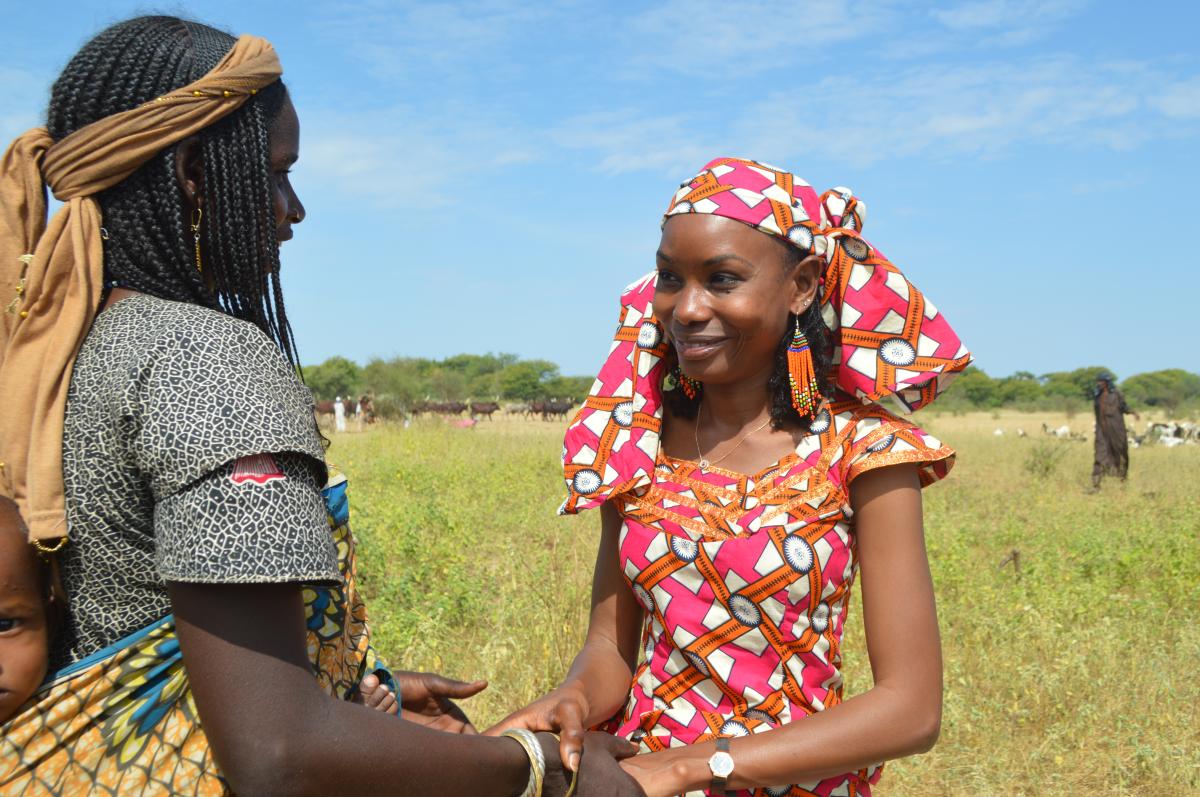
HOI:
I understand those arguments, I really do. I see where they’re coming from. In my own community, many young people don’t want to identify as Indigenous, because we are marginalized and discriminated against, because people do not respect you, do not consider you. So, I really understand that. My response is just to say, I am an Indigenous woman, I come from these communities, and we have the best knowledge ever, that Western knowledge cannot have. And I try to prove this every single day, by, for example, giving meteorological information. I say, in the modern world you have your applications which give you the weather forecast, but we have our grandmothers and grandfathers who are the best applications that give us our weather forecast. We have to be proud of our origins, of where we come from, value what we have.
I understand why many Africans want to copy Western culture. When you watch TV, they show you the best life, and you want that big villa, full of electricity, a big car, hundreds of TVs at home, cell phones, iPads, whatever. Those things mean you too are a modern person. It is this advertisement from the developed world—based on the destruction of everything on the planet, based on consumption that doesn’t respect the planet—which makes some Africans feel we also need to act like that. Even I sometimes feel I have to do this otherwise people won’t respect me. But no! Do we need to all look the same before we protect our planet? The Westerners, whom we look at as experts, as developed, are the ones who put us on the pathway of climate change. And they are the ones now who want to learn more about our Indigenous knowledge. I will give you an example, and I am speaking especially to all our African folks. In Europe or in the US, they have a specific market, the organic market. What is the organic market? They want to go back to our way of production which respects nature, because it’s the healthiest. If you are in these developed countries, if you are not rich, you cannot eat organic food at every meal. But we are so lucky, we still have our organic food for even the poorest in the deep villages of Africa—they are the ones who can eat 100 percent organic. So the kind of life that we have is the most valuable. It is the future. It is not the past. The modern life that they want you to copy, that is the past. Because that life is destroying our land.
I understand also how my sisters feel lonely, excluded. I feel that too sometimes. Because we do not have the same thinking as others. We do not have the same vision. And people think that you are just pulling them back. But they will understand one day that we are pulling them up. Just look at the example of our mama, Wangari Maathai. When she started planting trees, everyone called her that crazy Kenyan woman. No government, nobody respected what she was doing. But years later, she was vindicated and received a Nobel Prize. And now even though she has passed away, Westerners take her as an example. So, she was a visionary. To do this kind of work, I tell you my sister, is the same. The future will vindicate what we are standing up for, both in the developed and developing world.
YK:
You have co-directed the World Indigenous Peoples' Pavilion at several climate COP conferences. What are some of the commonalities that you notice in vision, experiences, and outlooks between Indigenous peoples across the world?
HOI:
Indigenous peoples live across seven socio-cultural regions, we live across all the ecosystems, from the desert to the savannah, from the mountain to the tropical forests. We live on glaciers, we live on islands. Indigenous peoples represent five percent of the world’s population, and yet we protect eighty percent of the world’s biodiversity. What we all have in common is our belief that Mother Earth is alive, that we have a duty to protect her as a guardian of ecosystems. It doesn’t matter that my Saami or Inuit brothers and sisters live in ice lands, it doesn’t matter that my fellow Baka or Batwa live in the Congo Basin tropical forests, it doesn’t matter that the Guarani, my other relatives, live in the Amazon, or that I live between the savannah and forest, in the desert. We speak the same language: protecting Mother Earth.
Having an Indigenous Peoples’ Pavilion at the COPs helps us to come together and to present our solutions, to tell the world that we are not the problem. We are the most impacted, yes, but we are not the problem, we are the solution. And our solutions are all interconnected. You cannot think about protecting tropical forests without thinking about protecting oceans, glaciers, savannahs, because our ecosystems are interconnected. As people we are also interconnected. We try to tell the world that there are no borders. You cannot build a wall against climate change.
YK:
Let’s talk specifically about Chad, which is perhaps one of the countries in the world with the most dramatic manifestation of negative human impact on nature, with Lake Chad, which in just two generations has shrunk to ten percent of its original size, due to climate change and water demand for irrigation. As we approach many ecological tipping points, with the risk of accelerating the degradation of nature, that extraordinary loss that Chadians have experienced may become more widespread around the world. Yet, this kind of risk remains very abstract for many people. Can you tell us how it feels to bear witness to such cataclysmic change?
HOI:
Chad is the real face of climate change impact. When my mom was born in the 1960s, the lake used to be twenty-five thousand square kilometres. Decades later when I was born, the lake was down to ten thousand, and right now it is about 1,200—sometimes more, depending on the rainy season. Ninety percent of the water just evaporated. When you live there, you can see new islands emerging every single year.
Rainy seasons are becoming heavier, and bring floods, as happened this year: we still have thousands of homeless from this year’s rainy season. And of course, we also have drought, cattle, and now even camels are dying because there is not enough water. All that results in food insecurity. We have a severe food crisis in the region, which gets worse every day because regular rain does not fall.
This is impacting our environment in two ways. First, the plants, the birds—we are losing them. All species of nature are disappearing, sometimes forever. I remember certain kinds of grasses that do not exist anymore. My children will not have the chance to see them. This is very, very sad. Second, we have the desert that is advancing four kilometres every single year. That’s no joke. Four kilometres is a lot. If you project that over the next ten years, you can have entire villages and cities disappear because of the advancing desert.
Then there is the social impact of all this climate change. The conflicts between communities that may erupt over access to resources. And the migration of communities internally, moving from the dry north to the forested south. These movements then create other kinds of conflict. You have the roles of men and women in society that are changing tremendously. This creates new problems. So, we go from problem to problem, from one crisis into another every single day. What we need is urgent action globally to fight climate change, in order to stop global warming. For us, the Paris Agreement’s goal is lost, we already have reached 1.5 degrees of warming. If we go higher, we are not going to make it.
YK:
You have in the past cited this proverb: “If you walk alone, you walk faster; but if we walk together, we walk longer and further.” Are you optimistic about our ability to walk together today?
HOI:
Of course, I’m optimistic because otherwise I couldn’t be here. When I see the women and men of my community standing up to fight climate change, without waiting for anyone to come, I have to be an optimist.
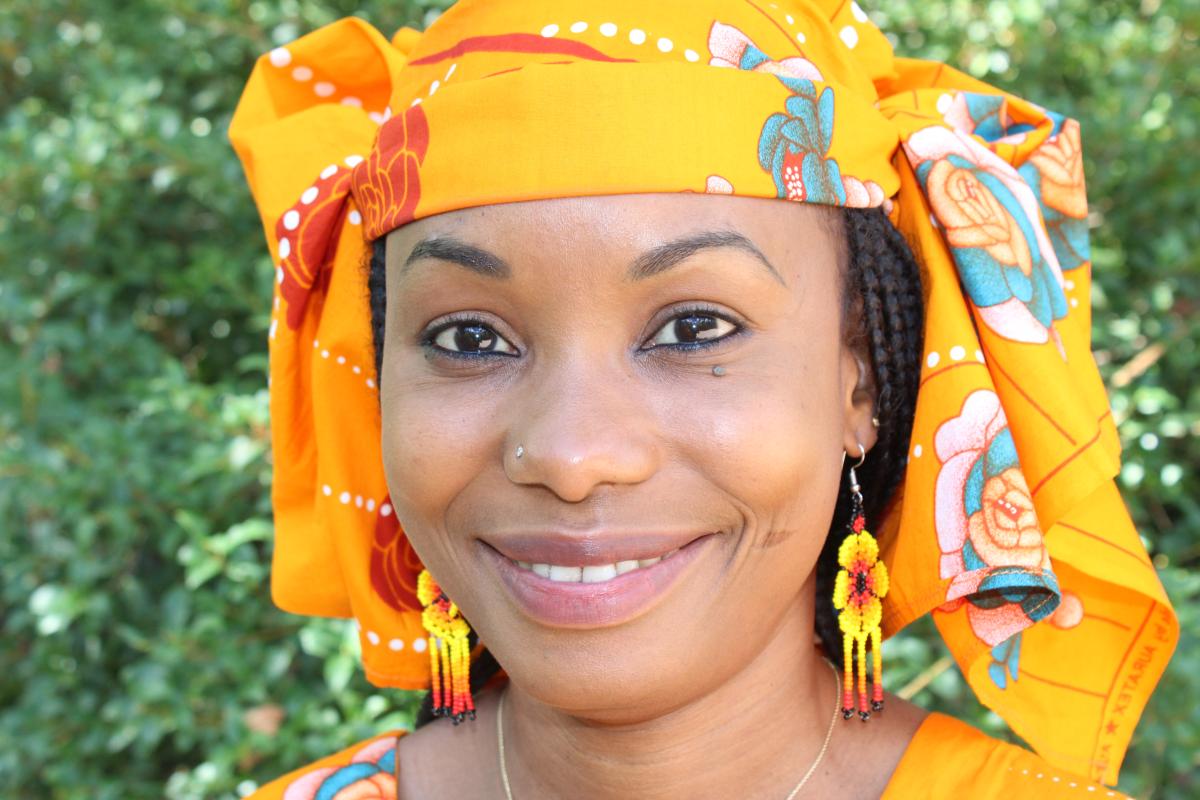
As climate activists around the world, we are all walking together. We now need to walk faster. We have to combine the two. The developed world, on the other hand, is neither walking fast nor together, they are walking alone. And this is not a good signal at all. Just look at the examples after COVID. All the developed countries faced an energy issue: “Winter is coming,” they said. And they forgot about climate change. They all wanted to go back to fossil fuels, because they were thinking about the next elections, how to stay in power. That behavior needs to change.
Maybe now we [in poor countries] are the most impacted. But believe me, we are resilient, because we are innovating our own way of adaptation. Tomorrow it is going to be you, because climate change has no borders. So act. And let us act all together very fast. We can walk together to get to the solutions.
YK:
At the COP 27 which was held in Egypt, there was finally a historic agreement reached on loss and damage, which is something you have campaigned about. But that was shortly followed by the announcement that the next COP would be hosted by yet another major fossil fuel producing country. How did you receive this news?
HOI:
This is the politics and it’s so tiring. Do you remember the COPs in Eastern Europe? Poland is the country that has hosted all previous COPs in that region. The last COP in Poland was held back-to-back with an oil forum. They didn’t care. It was just about checking a box—we organized the climate conference. That needs to change. We need a reform of the UN negotiations on climate change.
For the next COP, COP 28, which may even be chaired by a chair of an oil company, it would be great to see the UAE take a step forward, show us that they are ready to exit from fossil fuels because they are hosting the climate change conference. What does the UAE really want? They have all the wealth one could have, they have the tallest towers, the deepest swimming pools, they are just investing in things so useless that no one cares about. It’s time for them to stop digging up the land, taking fossil fuels out. It’s time for them to shift their economy to renewables, to shift their money to invest in adaptation and resilience, for all the damage that they have caused to the developing world.
I hope that Cop 28 will be a big signal of the act of moving away from fossil fuels. If that doesn’t happen, we are not going to trust the system anymore. The system must change. It is very hard for the people like me to see how world leaders are not acting, how they say one thing and then do the opposite.
YK:
Let’s shift topics slightly. My mother is Ankole from Uganda and you may have heard of our famous Ankole cattle with their beautiful horns. I see you have a picture of cattle behind you yourself, because you are originally from the Mbororo people, a Fulani ethnicity. Have cows taught you any valuable lessons that you use in your approach to the world and to challenges that you face?
HOI:
I’m so happy to hear that you also come from cattle-herders because cattle are everything for us. As Mbororo, our name comes from our cattle—red cattle with big horns called mbororoji. Even in schools, in history lessons they learn about the zebu mbororo.
We are so close to our cattle. They give us information about where we have to move to. As nomads, you follow your cattle, it is not the cattle that follow you. You learn a lot from them. Our cattle are also our meteorological information. When the rainy season is approaching, all cattle lie with their faces facing south. You can beat them, you can do whatever you want, they all lie facing south. And then they sniff the air with their noses. Even if you haven’t seen a single cloud, no rain, you know that the rainy season is coming, prepare yourself.
Our cattle are our economy. They are our food. They are our teachers. They are our siblings, actually. When you come to the community, in the greetings, you have to ask how are your cattle. If you don’t ask about the cattle, that means that you really do not care about me. So, if you want to show that you care about me, you must ask how am I, and how are my cattle. And then we can start the conversation from there.
Yarri Kamara is a writer and translator, a member of Culturescapes 2023 Sahara Artistic Advisory Board.
Photos: Salma Khalil, courtesy of Terre Indigène.

